3 Underused, Highly Effective Ways to Use Competitive Intelligence
3 Underused, Highly Effective, Ways to Use Competitive Intelligence. See how you can learn from your competitor's mistakes, use real-time data to...
Are you planning or evaluating your competitive intelligence program? Would you like to see what others are doing? We’ve compiled usage statistics from all of our users so you can see how you compare.
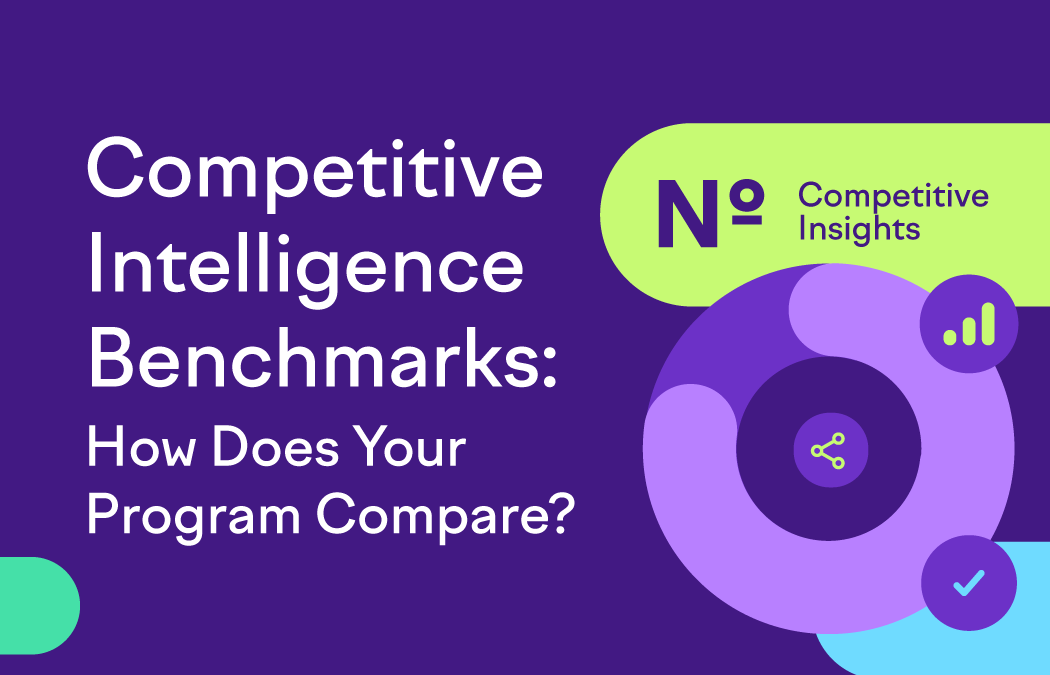
Are you planning or evaluating your competitive intelligence program? Would you like to see what others are doing? We’ve compiled usage statistics from all of our users so you can see how you compare and what can learn from the patterns we see.
Kompyte’s customer base includes companies of all sizes and from all industries. They span e-commerce, manufacturing, SaaS, healthcare, DevOps and many others.
There are companies with over 10,000 employees and over 2,000 Kompyte users across sales teams, product marketing, and competitive analytics. Kompyte also works with companies with sales teams that are under 20 members. No matter the size of the company or market, Kompyte assists those who are looking for an automated competitive intelligence solution to help with sales enablement activities.
Kompyte gathers competitive intelligence through artificial intelligence (AI) and automation by visiting millions of data sources across the internet to build actionable insights for sales enablement initiatives. Initiatives such as providing sales teams with all the assets they need to be more effective which often includes Battlecards and Reports with up-to-the-minute competitor insights.
A study of Kompyte users revealed that those who began using Battlecards saw an increase in win rate of up to 30%.
And without further ado, here’s what we learned about the competitive intelligence programs of Kompyte customers this year.
Users of Kompyte by Semrush tracked an average of 33 competitors. These real-time competitive insights take hours of research to compile if done manually, but with Kompyte, an hour a week is all it takes to ensure you never miss an important update.
Influitive, the leader in customer engagement software originally found keeping track of competitor information to be an intimidating and time-consuming task. The time savings they realized when they started using Kompyte enabled them to overcome that obstacle.
“We just know so much more about the competition. We now enjoy an extensive and accessible library of competitive insights” - Influitive
The insights Kompyte delivers include competitor website changes, product updates, social media posts, new customer reviews, and any other mentions that are publicly available online.
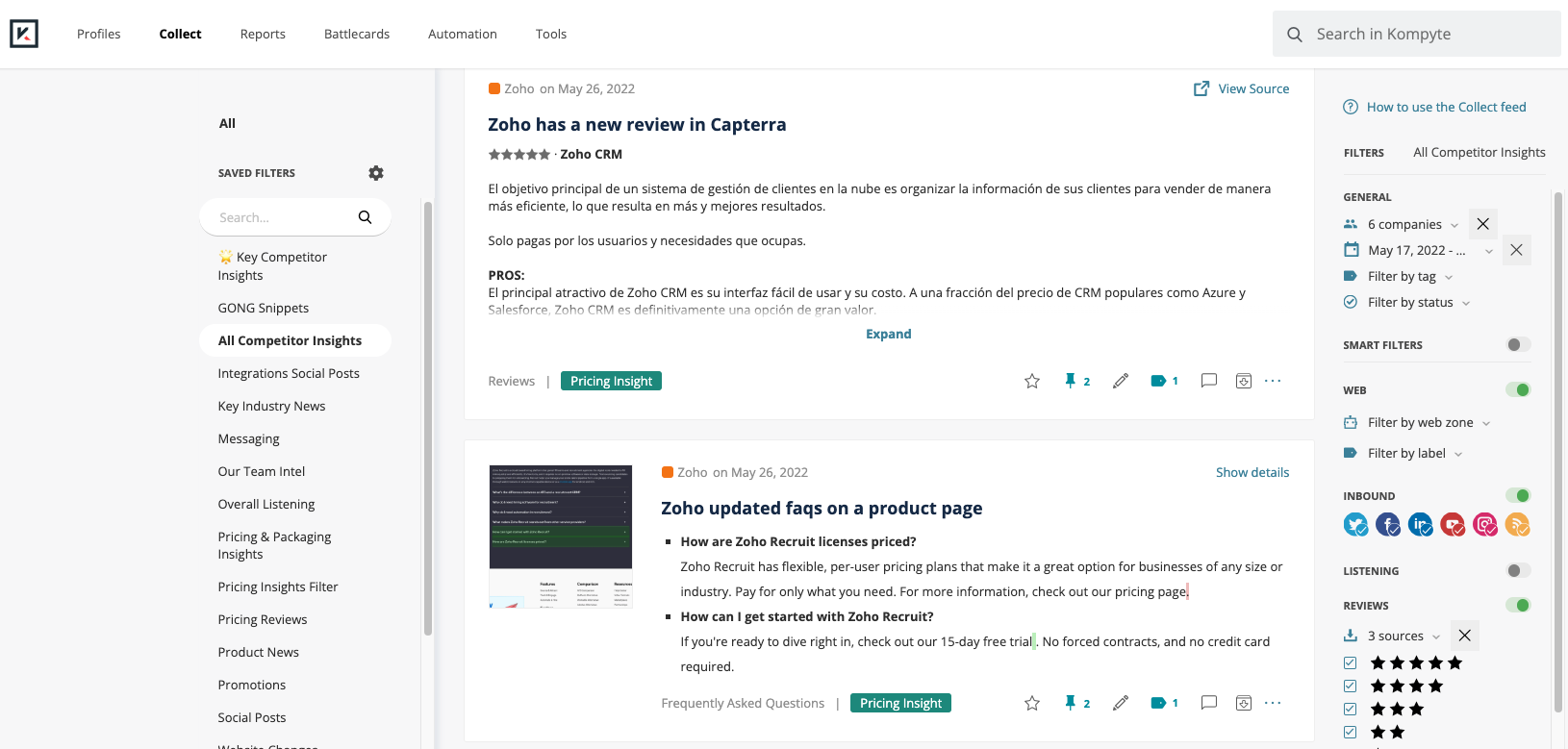
These powerful insights are then used to create Battlecards and Reports to help sales teams be more effective on sales calls, win more deals, and ultimately position themselves to higher positions in the market.
Podium, a marketing and communication platform for small businesses, has created over 70 Battlecards. These Battlecards cover why they win, competitor positioning, and objection handling. With this information, their sales reps had the necessary information to easily overcome objections, easily refer to competitive messaging, and handle vertical-specific inquiries to close more deals.
“It felt daunting trying to keep tabs on our competitors [manually]. Once you get Kompyte set up, it runs on its own” - Podium
The most common element impacting the number of competitors tracked is the level of competition in the market. Some markets have fewer than 10 competitors, but there is truly no “too few” number of competitors for competitive intelligence to be useful and even vital (unless of course, it’s zero!).
The lowest number of competitors tracked by Kompyte users is two, but that customer is using more than 10 Battlecards, which means that they were able to create multiple Battlecards for each competitor.
Creating multiple Battlecards per competitor means a user is covering all of their bases. One Battlecard could be an overview of a competitor, another might cover how to handle the most common objections, and finally one that covers a specific vertical of the customer you’re selling the product to. Kompyte doesn’t limit the amount of Battlecards or Reports a user can create or share. This is vital in having a successful Sales Enablement program.
Battlecards should be short and concise with pertinent information. Usually, there will be individual Battlecards for product information, handling objections, competitive messaging, use-cases, and most frequent questions, ensuring all of their bases are covered when it comes to sales engagements.
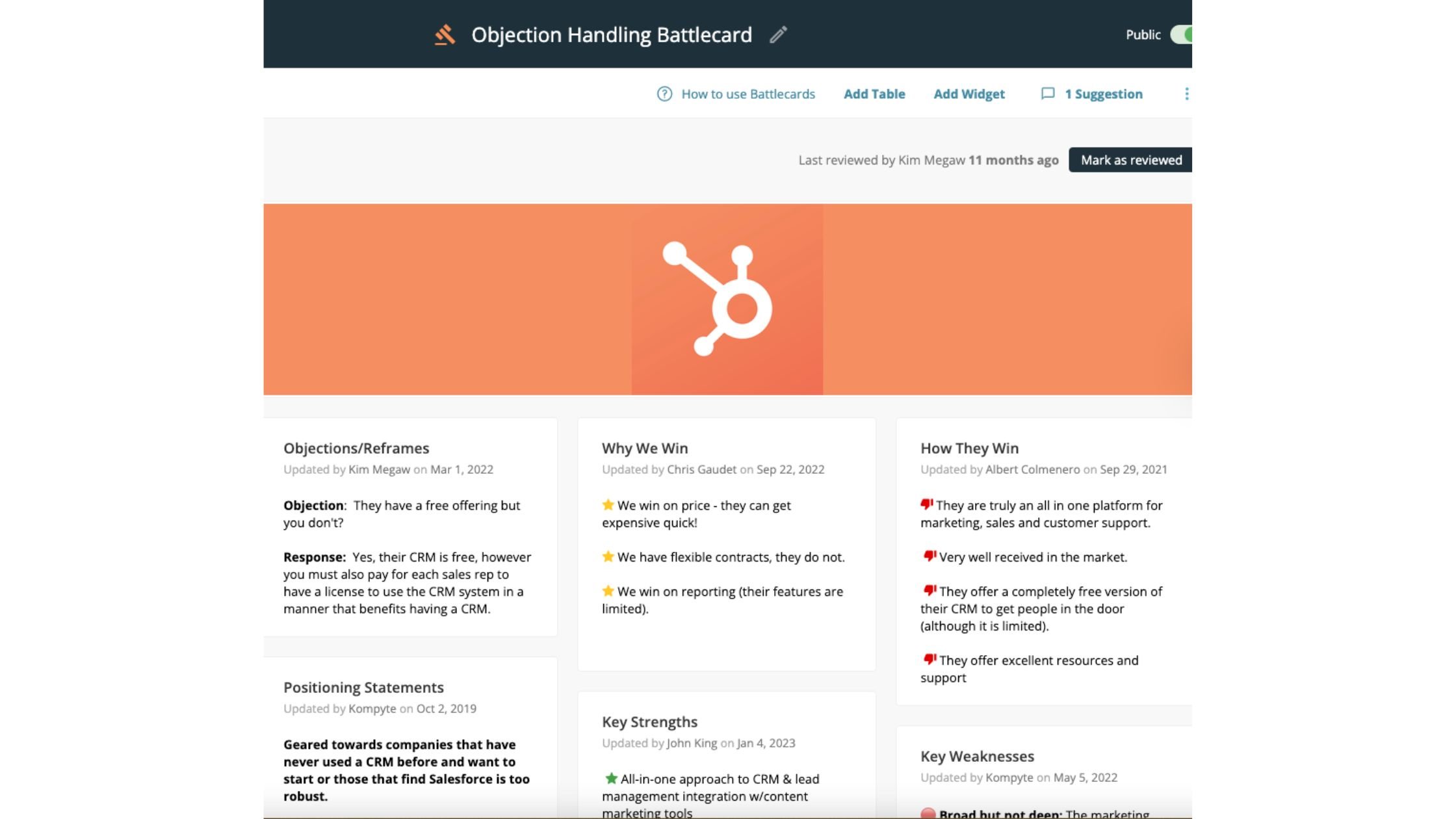
Some companies have as many as 20 competitors. With Kompyte’s AI and automation, it makes it easy for users to update multiple Battlecards and Reports. When one insight changes, it changes in every related Battlecard., alleviating the need to go into each Battlecard and update that information, making it easier for users to keep Sales enabled in a heavily competitive market.
When tracking competitor content and behavior, tracking key pages on their websites is essential, but that’s just the bare minimum.
Other sources our customers monitor include:
What do we learn from the average number of URLs monitored? Kompyte customers know that competitor data isn’t limited to one or two pages that you can monitor manually. Keeping track of over TWELVE HUNDRED pages requires automation.
And what if you or your competitors are mentioned on a site you haven’t added to your accounts? You can set up Listening Alerts to pull in any mentions on Google News and Twitter as well. Some of our users, with the assistance of their Kompyte Customer Success Manager, have very clever ways to see exactly what they want to see and to filter out what they don’t!
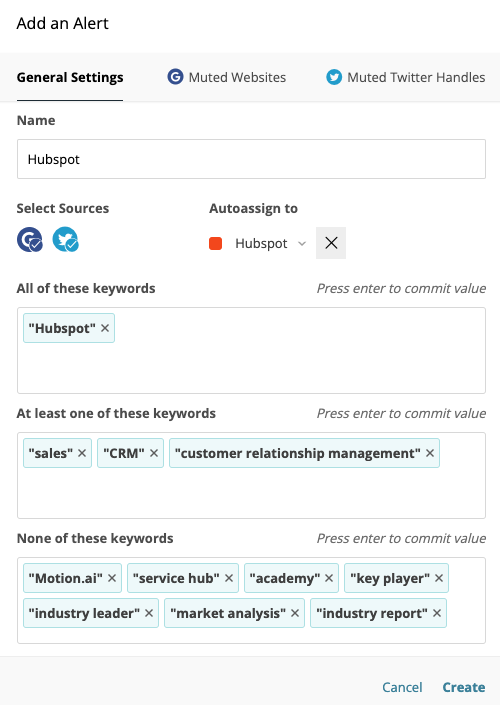
Competitor insights are gathered mainly by Kompyte AI, but users can add their own insights as well. Those manually-submitted insights would be something discussed on a sales call, or a conversation at a trade event. What’s an insight? In real time, our users get:
How are they using insights? Those insights keep the organization up-to-date on what’s going on in the market. They fuel sales collateral such as Battlecards and Reports, help product teams evaluate their roadmaps, and enable marketers to execute powerful go-to-market strategies.
Isn’t that overwhelming?
Sure sounds like it. And if you were manually reading and sorting each insight, well, you couldn’t. Kompyte’s advanced AI filters out any unnecessary information, ensuring users receive actionable insights.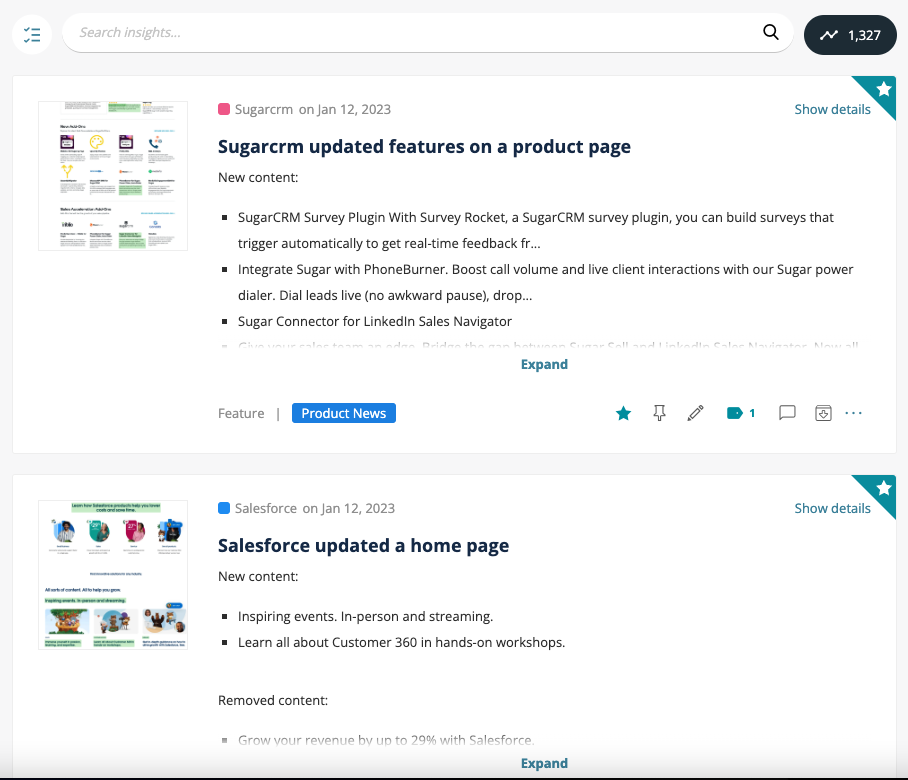
Our users create and use a relatively large number of Reports partly because our vast template library makes it so easy. There are report templates for Win-Loss analysis, Battlecard analysis, Hiring Trends, and of course, the ability to create one from scratch. This allows competitive enablement teams a transparent view into their Sales Enablement efforts and their effectiveness.
Why so many reports?
Thanks to the easy-to-use templates and simple Report generator, teams of all sizes have utilized this feature - and there are no usage limits here. Create what you need to get a complete look into your sales enablement programs, or look more deeply into one area, no matter how competitive your market is.
“How many Battlecards should I have?” is one of our most frequently-asked questions. The short answer is that it depends on how many competitors you have and what kind of support your sales team needs.
If your sales team is handling a lot of objections, you’ll create an objection-handling Battlecard for each competitor. If your product has vertical-specific features, you may want to create a Vertical Battlecard for each. On average, we see users have at least 3 Battlecards per competitor, covering topics such as feature comparisons, where they win, and how to handle specific objections. You can make your own with our template.
Kompyte keeps Battlecards up-to-date automatically, ensuring sales teams have the latest information.
How are Battlecards impacting our customers’ sales results? Users typically have an up to 30% increase in win-rates when they start using Battlecards (based on internal data gathered on Kompyte users, 2021).
Sharing is caring and Kompyte’s numerous integrations allow users to keep sales and others in the know. When a user creates or updates a Battlecard, they can share it to Slack, Microsoft Teams, and email. Sales teams can even subscribe to receive notifications when a Battlecard is updated.
Most of our users prefer instead to access Battlecards inside the platforms they already use, such as HubSpot and Salesforce.
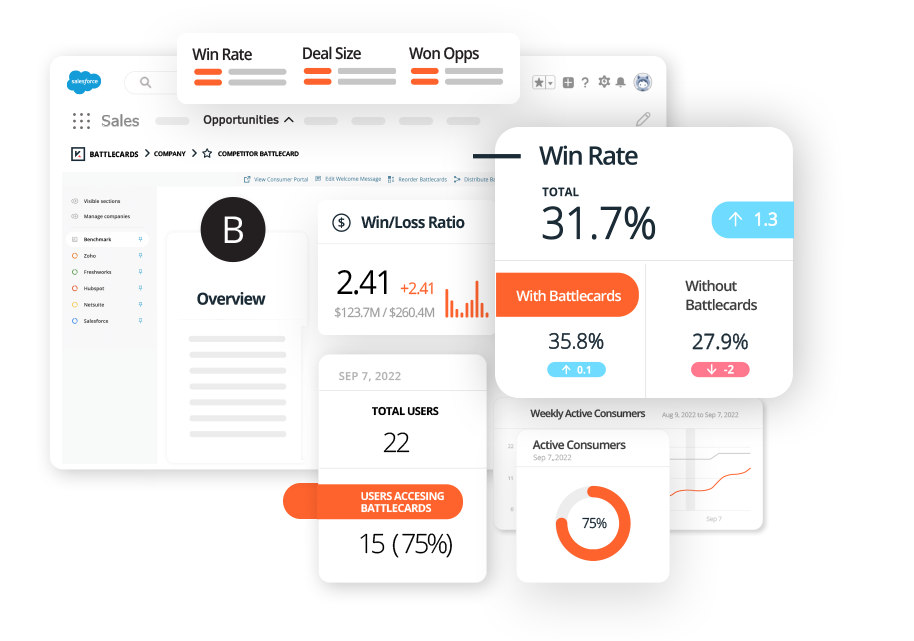
Competitive Intelligence looks different for each company and Kompyte is built for competitive markets of any size. When we see numbers like an average of 86,000 insights tracked, it’s easy to see how a manual competitive intelligence program can result in outdated insights, leaving marketing and sales in the dark when it comes to competitive positioning.
Automated competitive intelligence programs cut the time required for searching for those insights, filtering, and sharing them via Battlecards, Reports, and real-time alerts to about an hour a week.
If you would like to learn how Kompyte can improve your competitive intelligence program, schedule a time to speak with us here.
3 Underused, Highly Effective, Ways to Use Competitive Intelligence. See how you can learn from your competitor's mistakes, use real-time data to...
Smart moves based on competitive intel are all around us. Have a peek at 8 examples of competitive intelligence, with tips to do the same for your...
See how you can use ChatGPT and other AI-powered language models to quickly craft winning Battlecards to outsell your competition.
Be the first to know about new B2B SaaS Marketing insights to build or refine your marketing function with the tools and knowledge of today’s industry.